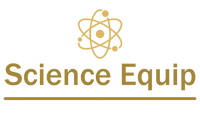A Bunsen burner poses a potential safety hazard due to its naked flame and high temperature. Ignoring adequate precautions can result in gas leaks, fire, explosions and burns. Here is a detailed guide on using it safely.
Pre-Use Tips for Using Bunsen Burner:
· Wear appropriate Personal Protection Equipment (PPE) such as flame-resistant lab coat, safety glasses for the eyes, gloves, etc.
· Remove personal accessories such as jewellery.
· Keep your long hair tied and avoid loose clothing.
· Be aware where fire extinguisher and eye wash station are located in the laboratory. The shut-off valve of the main gas outlet should also be known.
· Know the use of a fire extinguisher and first aid.
· Know other emergency safety procedures laid down by the laboratory.
· Inform everyone about the schedule of burner use.
· Maintain adequate ventilation to allow fumes or combustion products to release safely.
Bunsen Burner Setup Tips:
· Clear the space by removing flammable or combustible substances.
· Maintain a distance of at least 12 inches between the burner and other apparatus.
· Avoid using it under shelves, storage cabinets or dangling devices.
· Inspect the burner and all its components. Pay close attention to the hose for fissures, holes or other defects and damages.
· Use high-quality, appropriate gas hose or tubing that fits the outlet and inlet of the burner.
· Fasten the hose end firmly. However, avoid excessive tightening or else it may crack.
· Fill the burner to a maximum of 75-80% of its capacity with appropriate alcohol such as ethanol or ethylene alcohol.
· Set the burner on an even and heatproof surface such as a heat-resistant mat.
Lighting a Bunsen Burner:
· A matchbox is never a good choice to kindle the flame of the burner. Always use a spark lighter with a protracted nozzle.
· Maintain a safe distance between yourself and the burner while lighting it.
· Understand the difference between the colours of flames and adjust them according to the purpose of the experiment.
· The yellow flame appears cool and flickering. It is clearly visible. It emerges on closing the air hole. It restricts the air intake and prevents complete combustion. It is ideal for non-heating purposes.
· The blue flame is a hot, steady flame. However, it is not as luminous as a yellow flame and usually appears faint in bright light. It emerges as a cone-shaped flame on opening the air hole. It is suitable for heating purposes as it can produce an efficient burn.
· Adjust the air flow of the burner as per the needs of the experiment.
Tips While Using ABunsen Burner
· The most fundamental rule while using a Bunsen Burner is to never leave it unattended while it is lit. It can easily spark a fire or explosion in the laboratory, injure the users and damage the property.
· Switch to yellow flame when the burner is not in active use for heating.
· Avoid leaning over the flame for close inspection.
· Use heatproof glassware, preferably Borosilicate, to heat liquids.
· Use crucible tongs, heat-resistant gloves or thermal holders to manage hot objects.
Bunsen Burner Post-Use Tips
· Switch off the burner’s gas valve right away after the experiment is over.
· Make sure that the flame has extinguished completely.
· Check for any whooshing sound – it could indicate a gas leak and improper closing of the gas valve.
· Let the burner cool down completely before touching it with your bare hands or for further use.
· Dispose of the waste safely and responsibly.
Bunsen burner-related accidents are easily avoidable by following the necessary protocols. Every laboratory has a set of guidelines regarding the use of a Bunsen burner. Make sure to acquaint yourself with the required procedures and safety precautions before use.
